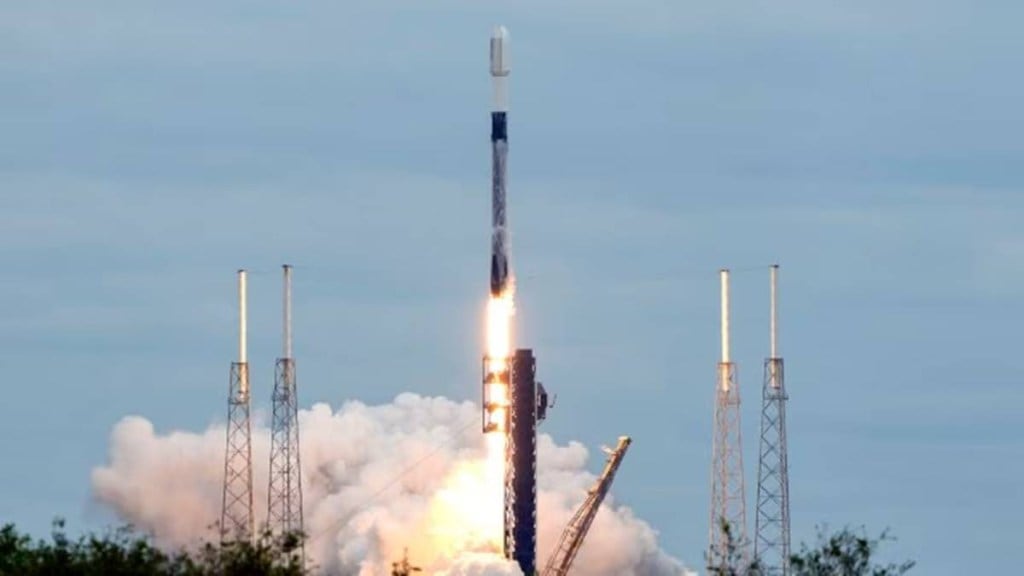As India’s GSAT-N2 satellite was launched aboard a SpaceX Falcon 9 rocket, it underscored the dichotomy of India’s ambitions in space—relying on international partnerships to bridge current capability gaps while charting a path toward long-term self-reliance. While the collaboration with the United States showcases India’s growing influence in the global space arena, it also raises critical questions about the strategic risks and opportunities of such dependencies.
The challenges and lessons for India’s space ambitions are multifaceted, as highlighted by experts such as Commander Rahul Verma (Retd), a leading aerospace analyst, and Omkar Nikam, a space industry expert based in France. Their perspectives provide valuable insights into how India can navigate its collaborations with the US, mitigate associated risks, and accelerate its trajectory toward autonomy.
The Promise and Perils of Collaboration
The US-India collaboration on satellite launches offers India access to advanced technologies, cost efficiencies, and enhanced diplomatic ties. As Commander Verma notes, “The United States has a technological edge in areas such as reusable rockets and high-resolution imaging sensors.” Leveraging such partnerships allows India to deploy critical satellites more quickly, particularly for defence and scientific purposes, while strengthening geopolitical bonds with a key global power.
However, Omkar Nikam highlights the inherent risks of these collaborations. “The Trump administration demonstrated how rapidly US policies can shift due to domestic political priorities,” he observes, cautioning against over-reliance on a single partner. The unpredictability of US domestic politics could disrupt ongoing projects, while regulatory frameworks like the International Traffic in Arms Regulations (ITAR) might limit India’s access to sensitive technologies. Moreover, such dependencies pose challenges to India’s broader vision of strategic autonomy, particularly in defence-related space programs.
Lessons from the Past: The Impact of US Sanctions
India’s experience with US sanctions in the 1990s offers a historical lens to understand the risks of reliance on foreign partners. Following the Pokhran nuclear tests, the US imposed an embargo on cryogenic engine technology, significantly delaying India’s space program. Yet, this setback became a turning point for India. ISRO developed indigenous cryogenic engines like the CE-7.5 and CE-20, establishing a foundation for India’s robust domestic space ecosystem.
As Nikam points out, “India emerged as one of the most tactical players in the world to navigate complex boundaries of geopolitics.” This resilience, bolstered by diversified partnerships with countries like Russia, France, and Israel, has ensured that India remains insulated from similar disruptions today.
Key takeaways from the sanctions include:
Indigenous Innovation: Necessity drove ISRO to invest in R&D, laying the groundwork for today’s advanced capabilities.
Diversification of Partnerships: Strategic collaborations with multiple countries reduced India’s dependence on the US.
Focus on Resilience: A culture of self-reliance emerged, ensuring preparedness for future geopolitical challenges.
The Road to Self-Reliance
While India’s space program has made significant strides, particularly with the GSLV Mk III (LVM3), which can launch heavy geostationary satellites, full self-reliance remains a work in progress. Experts estimate that achieving autonomy in critical areas such as reusable rockets and manned spaceflights could take another 5–10 years, contingent on sustained funding, robust R&D, and private sector participation.
Nikam emphasizes the importance of consistent investment and experimentation in launch technologies. “Launch remains the riskiest business in the industry. SpaceX’s dominance showcases the high need for nations to invest and experiment more in launch technologies to achieve high success rates,” he explains.
India’s burgeoning private space ecosystem is a promising development in this regard. Startups like Skyroot Aerospace and Agnikul Cosmos are pioneering cost-effective and innovative launch solutions, supported by government initiatives such as IN-SPACe. Collaboration between ISRO and these startups could accelerate India’s journey toward self-reliance.
Strategic Balancing: Collaboration as a Means, Not an End
India’s current dependence on SpaceX for the GSAT-N2 launch should not be viewed as a setback but as a strategic decision to meet immediate needs while building domestic capabilities. As Commander Verma notes, “By treating collaboration as a means to accelerate its own growth rather than as a permanent dependency, India can mitigate risks while benefiting from US expertise.”
A balanced approach is critical:
Short-Term Gains: Leverage US partnerships to address immediate gaps and gain exposure to cutting-edge technologies.
Long-Term Vision: Invest in indigenous R&D and private sector growth to ensure that these collaborations remain transitional.
A Global Vision for India’s Space Sector
India’s space ambitions extend beyond technology to encompass its geopolitical and economic aspirations. Dependence on foreign entities exposes vulnerabilities to supply chain disruptions and shifting foreign policies. To maintain strategic autonomy, India must prioritize:
Indigenous Development: Focus on reusable rockets, propulsion systems, and modular satellite designs.
Private Sector Integration: Foster a vibrant private ecosystem to complement ISRO’s efforts.
Redundant Partnerships: Engage with a diverse set of international partners to mitigate geopolitical risks.
India’s trajectory toward self-reliance in space is emblematic of its broader aspirations as an emerging global power. The lessons of the past, combined with the opportunities of the present, position India to become a leader in the global space sector, balancing collaboration with autonomy to secure its place in this critical frontier. As Nikam aptly puts it, “India’s strong diplomatic ties and positioning as an economic and technological powerhouse will ensure it overcomes challenges while charting its own path.”
The GSAT-N2 launch serves as both a milestone and a reminder—of how far India has come and how much further it can go in its quest for strategic independence in space.

